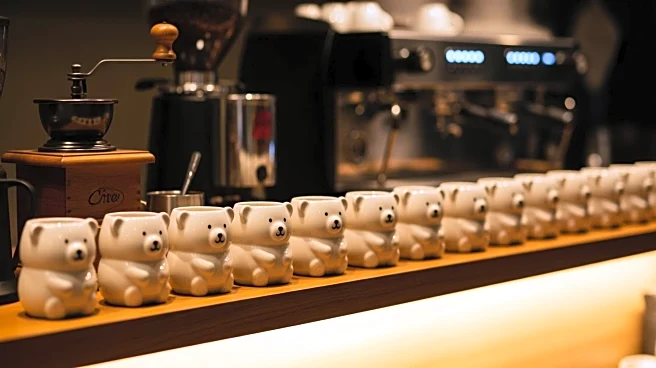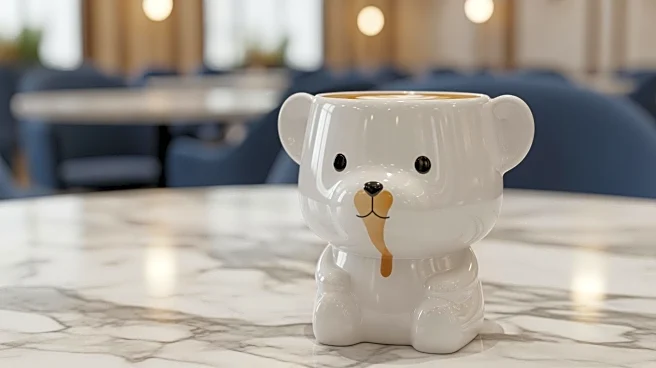What's Happening?
Starbucks has issued a public apology following the rapid sell-out of its Bearista cups, a special holiday merchandise item. The 20-ounce bear-shaped iced coffee glasses were released to celebrate the Christmas
season but quickly disappeared from shelves across the United States. Customers expressed frustration on social media, noting that some stores received only one or two cups, and alleging that employees purchased them before the stores opened to the public. Starbucks acknowledged the overwhelming demand, stating that the excitement for the Bearista cups exceeded their expectations, despite shipping more of these items than any other holiday merchandise. The company apologized for the disappointment caused by the shortage.
Why It's Important?
The incident highlights the challenges companies face in managing inventory and customer expectations during high-demand periods. For Starbucks, the Bearista cup frenzy underscores the importance of effective supply chain management and communication with customers. The shortage has led to negative publicity and customer dissatisfaction, which could impact brand loyalty and sales during the holiday season. This situation serves as a reminder for businesses to anticipate demand accurately and ensure equitable distribution of popular products to maintain customer trust and satisfaction.
What's Next?
Starbucks may need to reassess its inventory strategies and consider increasing production or distribution of popular items to meet customer demand. The company might also explore ways to improve transparency and communication with customers regarding product availability. Additionally, Starbucks could implement measures to prevent employees from purchasing limited stock items before customers have access, ensuring fair distribution. These steps could help mitigate future issues and restore customer confidence.
Beyond the Headlines
The Bearista cup shortage raises questions about the ethical implications of marketing strategies that create artificial scarcity. While such tactics can drive demand and excitement, they can also lead to customer frustration and backlash if not managed properly. Companies must balance creating buzz with ensuring customer satisfaction to avoid damaging their reputation.











